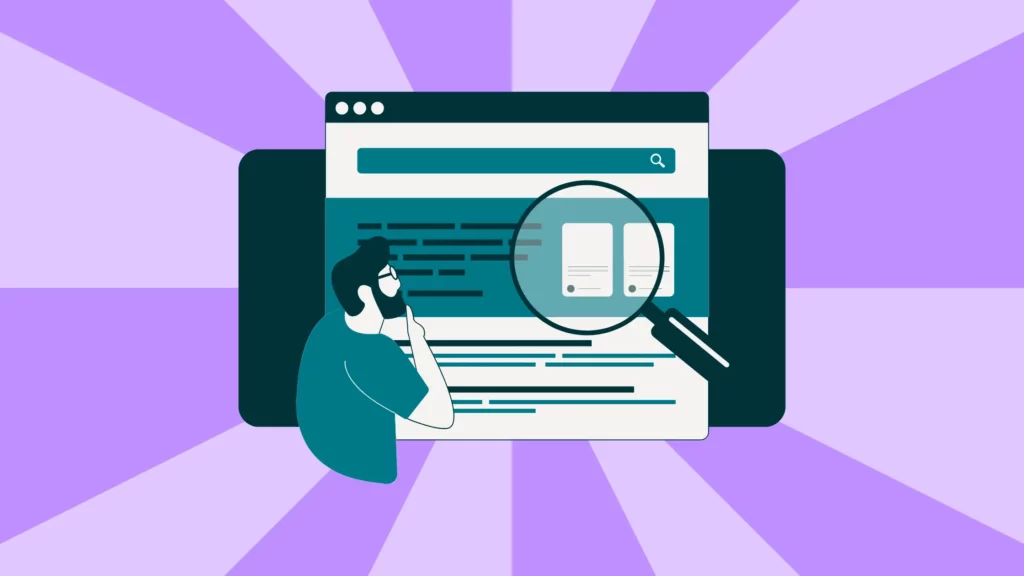
How to create the perfect sales battlecard
Understand how to address common concerns raised by prospects about your competitors. Grasp where your strengths lie and where improvements are needed. With battlecards, mastering these elements becomes a straightforward task. Read on to learn more.
5 steps to to create the perfect sales battlecard
Sales battlecards have one primary goal: to boost your sales team’s success. They’re powerful strategic tools that offer simple yet effective ways to win more deals and achieve impressive results.
This guide will give your sales team the advantage they need by going through:
- The exact ingredients to a good sales battlecard
- Why sales battlecards are such a powerful tool for sales teams
- What information should be included
- Five concrete steps to create the perfect battlecard for your needs
What are sales battlecards?
A sales battlecard is a visual resource – often, a one-page cheat sheet. A good one-pager will contain:
- Information on your main competitors (for example, if you’re selling for IBM, you may have a battlecard about Samsung, Microsoft, etc.)
- This information could include competitor’s products, tactics, and services
- Pricing, and how it stacks up to your own
- Responses to the most common objections you’ll hear from prospects in relation to the competitor
- Where you win and where you lose against your competitors
Battlecards are an easy way to get the main value propositions of your company into one short document. Often, sales reps will work from the same sets of battlecards. This ensures everyone is (literally) on the same page regarding pricing, product promises, and competitor insights.
Sales battlecards are not long-form sales scripts or opinion pieces. Think of them as fact-based go-to guides with essential product and competitor information – in a skimmable format. Having all of this on one page means reps can tailor their pitches and highlight how their product wins against the competition.
Battlecards are sometimes described by other names – sales enablement tools, deal guides, sales reference cards, and quick reference guides. In this post, we’ll continue to refer to them simply as sales battlecards.
Why battlecards are such a powerful sales resource
(Competitive) knowledge is power. Gathering crucial intelligence—on competitors, product features, and the marketplaces—in one battlecard means sales reps don’t have to spend hours digging these facts up for themselves. This versatility makes battlecards both a sales tool and a strategic asset.
Here are some of the biggest benefits battlecards bring to sales teams:
- Keeps reps updated about the competition: Your competitors aren’t standing still. Their products may feature upgrades and developments. Battlecards inform your team about where your product stands compared to your rivals’.
- Frees up your sales reps’ time: Possessing vital information on your competitors means sales reps can spend time on what they’re best at – honing the perfect pitch – rather than doing detailed research into your product and the latest competitor developments.
- Anticipate prospects’ objections: Your prospects will have tough questions about how your product differs from the competition. Battlecards allow reps to prepare for these questions. Battlecards highlight typical pain points, that waypitches are tailored to focus on how your product serves a prospect’s needs.
Battlecards as a strategic tool
Battlecards are excellent for competitive comparisons. You can also choose to use a battlecard that focuses on your product’s weaknesses. Doing so can offer you a valuable strategic resource.
Exposing and analyzing your product’s vulnerabilities gives you an understanding of the areas where your product requires improvement. It creates an opportunity for self-reflection, allowing your organization to take a step back and consider what can be done to develop and progress your product.
There’s many types of battlecards
Sales battlecards are multiple-purposed. You can use them in prospect-facing contexts to compare your product to one competitor (or multiple competitors), or you can use them internally as references for sales reps.
Types of battlecards could include:
- Product battlecards: Everything sales reps need for their pitch should be found here – customer pain points, product value propositions, and exclusive features that benefit the customer. Product battlecards can focus on one product or compare multiple products.
- Marketing battlecards: These analyze competitors’ marketing strategies to give sales reps insight into who the competition targets and how. This helps reps position your product. For instance, if a competitor underlines that it’s the most eco-friendly product in the market, your marketing battlecard may position your brand as technologically innovative. This helps justify your price point or target audiences seeking cutting-edge solutions.
- Competitive battlecards: These battlecards include comprehensive data about your competitors – pricing, solutions, services, and their customer profiles. This knowledge means sales reps are well equipped to handle questions from prospects about how your product compares to a rival’s.
- Cross-Sell/Up-Sell Battle Cards: Aimed at existing customers, these battlecards provide strategies for upselling or cross-selling additional products or services. This helps sales reps leverage established customer relationships and grow revenue opportunities.
How to create the perfect sales battlecard
Now let’s discuss the process of building a sales battlecard that will effectively support your sales team.
Firstly – what should be included in your sales battlecards?
In a nutshell, whatever helps your reps prove your product is better than your competitors. Remember, battlecards must be concise. They should take up a maximum of a single page.
To let your reps focus on crafting a perfect sales pitch (and ultimately closing a deal), your battlecard should include:
- Why your product wins: Highlight the main value propositions of your product; how it beats your competitor’s product; justify this with an actual customer story where possible.
- Your competitor’s strengths: Prospects will inevitably raise this. Battlecards should prepare reps to deal with objections. List what your competitor does well; highlight your product’s differentiators; justify these with real-life examples of how your product has performed brilliantly.
- How your product helps customer pain points: Your product has been developed with the customer in mind. Reassure the prospect of this by outlining the main ways in which your product serves existing needs.
- Field intelligence: Sales reps are experts at pitching to prospects – they shouldn’t have to be experts on the latest competitor developments. Battlecards should include the most recent developments related to your competitors and product.
These are just a few examples. Depending on who your reps are pitching to, battlecards could also feature customer testimonials, advice on sales pitch closing techniques, FAQs, or further contact information.
Versatility is a vital part of the power of battlecards. Customizability means they can fit your company’s needs or be tailored to a specific target market.
5-step recipe to create your sales battlecard
1. Talk to stakeholders
To figure out the specific purpose of the battlecard, you first need to understand the challenges your sales reps face.
So, discuss with stakeholders. Determine what information your reps need to engage with prospects. What objections do prospects raise? What do your reps need to know about your competitors?
Cross-collaboration is vital to this process. Each team has its own expertise and insights that will bring value to the sales pitch. For example, your product team will have deep knowledge of the latest technical developments. The marketing team will be able to give answers about your competitors’ market positioning. And the sales team will be aware of the most common objections raised by prospects.
Combining these insights puts you in an excellent position for step number two.↓
2. Determine what information helps your reps the most
After collaborating across teams, you should know exactly what issues reps need to address during pitches. With that knowledge, you can select the information you want to include in your battlecard.
For example, imagine you’ve decided a product battlecard (see our earlier definition) best suits your reps’ needs. This decision helps you choose the information that will go onto your battlecard.
In a product battlecard, you’ll want to offer comprehensive insights into the following:
- The areas in which your product wins against the competition (with proof to justify any claims)
- The areas where your competitors are stronger – and, to counterbalance this, value propositions highlighting your market position
- Field intelligence on your product and your rival’s developments. Field intelligence simply means information gathered on a day-to-day basis about the competition, sort of like a rumor mill.
Battlecards are malleable, nothing is set in stone, as they’re intended to reach your (or your team’s) goals. Set these goals and expectations using insights from key stakeholders. A strong starting point is from the angle of product development or sales enablement.
3. Always keep both eyes on your competition
Battlecards should be more than simply a direct comparison between you and your competitors. Level up your battlecards by analyzing the similarities and differences. This will help your reps address prospects’ pain points, highlight the areas in which your product is ahead, and prepare for objections in those areas where your product is weaker.
Doing this requires research. You’ll want to utilize both primary and secondary sources. Use a vetting process to determine what information sources are credible and what are not.
Competitor data for your battlecard could be taken from sources such as:
- Customer reviews
- Competitor websites
- Marketing collateral (competitor brochures, flyers, reports)
- Social media
- Industry reports
- Press releases
- Analyst reports
- Publicly available data (government publications, industry associations)
In addition, consider reaching out to customers that chose a competitor’s product over yours. Explore the underlying reasons behind this decision. It’s all part of empowering your reps through information, ensuring they can use your battlecard to close deals.
4. Consistently update your battlecard’s information
Having outdated information on your battlecards means your sales effectiveness is at risk. It leaves reps in a situation where their pitches rely on old data that may be inaccurate. Worse, reps may be blindsided by a prospect’s objection about a new competitor update – one your battlecard doesn’t mention.
This is why you should consider your battlecards as fluid, open-ended resources. Regularly vetting and updating the information they contain is one of the best aids you can give to your reps’ sales efficiency.
How frequently should you update your battlecard’s info? There’s no single answer, as it depends on your market. But we suggest updating at least once a quarter – and for some cases, as regularly as once a month.
Here are a few actionable tips to ensure your battlecards are up to date :
- Keep tabs on new competitors and add their information to battlecards
- Continuous market monitoring is a valuable source of new information
- Create all profiles with uniformity so that battlecards remain relevant and impactful
- Automation can help you keep battlecards updated: consider embeddables like competitive event calendars or automated news feeds with AI-generated abstracts
5. Drive battlecard adoption throughout your sales team
There’s no point in cross-collaborating, researching competitors, vetting data, and painstakingly honing pitches only for your sales team never to use your battlecards.
So make adoption as barrier-free as possible.
To drive adoption, think about the following:
- Training your sales team through workshops to get reps familiar with battlecards
- Consider rewarding reps that effectively use battlecards to win deals, and encourage sharing learnings about using battlecards!
- Ensure that battlecards are easy to access by hosting them on your CRM systems or sales enablement platforms – that way reps can easily find the battlecard they need for each specific case
- Carry out a win/loss analysis to help your reps identify strengths and weaknesses of your battlecards – this will lead to constant refinement and improvement
Bring on the ‘battle’
Sure, war language can be a bit cringey, but with up-to-date competitor insights, compelling product justifications, objection-handling solutions, and precise market positioning, your battlecards will give your reps the confidence they need to engage prospects successfully.
If you’re looking for an easy way to create, customize, and update battlecards, consider an intelligence platform that does the heavy lifting for you. M-Brain’s Intelligence Plaza creates customizable battlecards that can feed real-time intelligence into competitor profiles, including being one of the only solutions (we know this from our battlecards 😉) in the market that allow your team to collaborate on field intelligence. Find out more about our Competitor Analysis Tool or book a demo to find out more.




